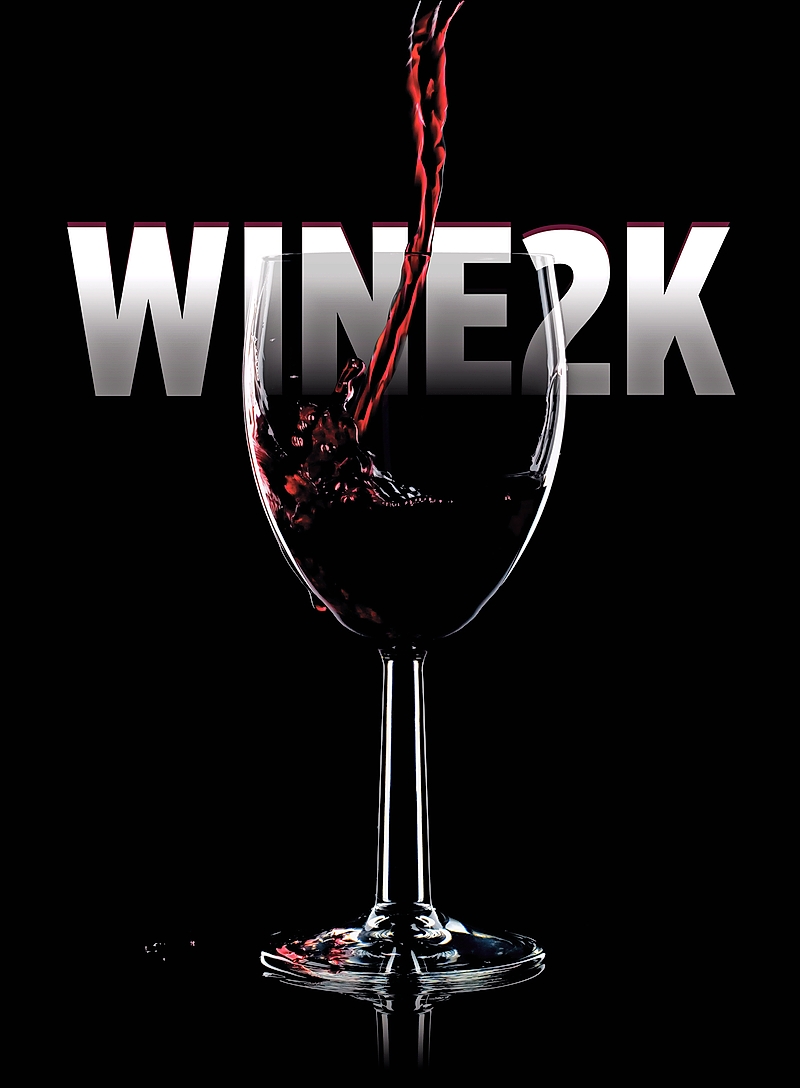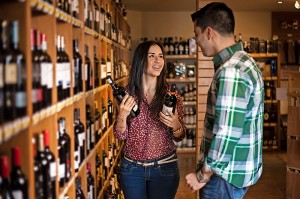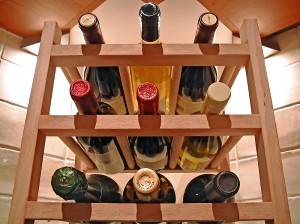Wine2k—Much to the delight of wine purveyors, millennials are becoming Generation Grape
By Mark Loehrke
October 2014 View more Featured
 In recent decades, the consumption timeline for most social drinkers has followed a more or less predictable path.
In recent decades, the consumption timeline for most social drinkers has followed a more or less predictable path.
 The college years could be distilled into a series of Solo cups, each brimming with an off-brand discount beer or unholy hard liquor concoction of dubious palatability. The post-grad years moved into name-brand beers, higher-shelf liquor selections (often mixed with Red Bull) and, for a smaller and more heavily-bearded niche, maybe a foray into the retro charms of something like bourbon. As personal incomes increased, so too did alcoholic tastes, with overpriced, candy-colored martinis and other higher-end cocktails coming into vogue as the 30s loomed.
The college years could be distilled into a series of Solo cups, each brimming with an off-brand discount beer or unholy hard liquor concoction of dubious palatability. The post-grad years moved into name-brand beers, higher-shelf liquor selections (often mixed with Red Bull) and, for a smaller and more heavily-bearded niche, maybe a foray into the retro charms of something like bourbon. As personal incomes increased, so too did alcoholic tastes, with overpriced, candy-colored martinis and other higher-end cocktails coming into vogue as the 30s loomed.
In general, it wasn’t until home ownership, middle management and procreation entered life that wine earned its place in the social pantheon. Why? Because wine was what the mom cabals at the bar were drinking, and it’s what your parents broke out when they invited you over for hors d’oeuvres and a game of Yahtzee. Wine was mature, sophisticated, and less generously, stuffy.
But this well-worn trajectory may be changing.
Modern Vintage
Recent industry studies have pegged wine consumption by members of the so-called Generation Y to be around 25 percent of the U.S. market—a far cry from the 40 percent plus share imbibed by the 55-and-older set, but still a promising turnabout for a group that many in the business had feared might be lost due to the negative connotations surrounding the product among younger consumers. So what has led to this new surge in such a key demographic for the future health and vitality of the wine industry? As the Marketing Director at Lynfred Winery in Roselle, Illinois, (which also operates a series of Tasting de Vine tasting rooms, including one in Naperville), Christina Anderson-Heller is very interested in that question.
 “Many younger adults were raised by parents who were well-off consumers, and were therefore exposed to food, wine and drink experiences early on in life,” she speculates. “As a result, the food and wine culture these days is much more hip, less stuffy, and a totally different beast than it was 20 years ago. At the winery we often see parents using the 21st birthday wine tasting as a rite of passage.”
“Many younger adults were raised by parents who were well-off consumers, and were therefore exposed to food, wine and drink experiences early on in life,” she speculates. “As a result, the food and wine culture these days is much more hip, less stuffy, and a totally different beast than it was 20 years ago. At the winery we often see parents using the 21st birthday wine tasting as a rite of passage.”
Tim McEnery, the founder and CEO of the Cooper’s Hawk chain of winery-and-restaurants, with locations in Naperville and across the country, says he’s seen the shift in perception toward wine among his younger customers, and believes it’s as much a product of a more informed consumer base in general than any specific youth-attraction factor.
“Education and sophistication among all consumers is the rising tide of the growth in wine consumption,” said McEnery. “Young adults are a driving force in wine’s continued popularity growth, even as its health benefits and place in social gatherings continues to drive other demographic groups as well.”
A Perfect Pairing
 Both Anderson-Heller and McEnery believe that millennial wine drinkers aren’t unlike any other new wine consumers in terms of the varietals they tend to seek out first, moving from sweeter to drier, and lighter to heavier over time. However, similar to the foodie culture that has seen a similar influx of younger participants, their tastes in wine do tend to reflect the growing preference for a local angle and/or some kind of interesting backstory.
Both Anderson-Heller and McEnery believe that millennial wine drinkers aren’t unlike any other new wine consumers in terms of the varietals they tend to seek out first, moving from sweeter to drier, and lighter to heavier over time. However, similar to the foodie culture that has seen a similar influx of younger participants, their tastes in wine do tend to reflect the growing preference for a local angle and/or some kind of interesting backstory.
“As a local winery, we see the younger generation much more open, and in fact seeking out, local producers and different wine-growing areas,” said Anderson-Heller. “Years ago I wouldn’t tell people it was an Illinois wine until after they tasted it because of the negative stereotype that many people had. Now it seems the younger generation wants to hear and taste everything local—local food, local wine, craft beer, small distilleries, etc.”
“Younger wine consumers look for authenticity in wine,” McEnery adds. “They are less the value wine buyers and are more interested in wines with a story or history. Educational events continue to be important to them, especially where education and entertainment are combined.”
Educational and Entertaining
It is that intersection of education and entertainment that is perhaps the most encouraging aspect of wine’s growing popularity among younger drinkers, as more and more millennials reach legal drinking age and winemakers reach out directly to them with targeted events and activities. That means engaging these new customers and trying to find out what they’re looking for in a wine experience.
“Our social media platform has proven to be an excellent source of marketing to the younger generation,” said Anderson-Heller. “We find that these new wine connoisseurs are looking for social experiences, such as wine tastings as a group, food and wine pairings and cooking classes. In fact, our most popular events with the younger crowd are fun pairings such as Halloween candy, potato chips and Garrett’s popcorn. They love to learn, but want to do it in a relaxed fashion.”
But, thankfully, not so relaxed as to bring back those dreaded Solo cups.
Days of Wine and Houses
 While the wine culture continues to take hold among a younger generation, more seasoned oenophiles are indulging their passion for the grape in ever more elaborate ways. Whereas a countertop wine rack or wide variety of stemware might have once adequately denoted a homeowner’s appreciation, today’s true wine lovers are carving out bigger chunks of their homes—and bigger cuts of their budgets—to go all out in accommodating their collections. Based on the high-end accoutrements and add-ons that his clients at Lakewest Custom Homes are requesting, Dan Jurjovec believes it’s safe to say the wine movement probably won’t be slowing down anytime soon.
While the wine culture continues to take hold among a younger generation, more seasoned oenophiles are indulging their passion for the grape in ever more elaborate ways. Whereas a countertop wine rack or wide variety of stemware might have once adequately denoted a homeowner’s appreciation, today’s true wine lovers are carving out bigger chunks of their homes—and bigger cuts of their budgets—to go all out in accommodating their collections. Based on the high-end accoutrements and add-ons that his clients at Lakewest Custom Homes are requesting, Dan Jurjovec believes it’s safe to say the wine movement probably won’t be slowing down anytime soon.
What are some of the wine-related amenities or features that people are incorporating into their home designs these days?
In almost all of our designs there is a butler’s pantry or a wine bar to connect the kitchen and dining spaces. A typical butler’s pantry will include wine refrigeration, wine bottle storage, and cabinets with decorative glass doors to display stemware. Some clients go a step beyond with a full wine cellar or tasting room with climate control and wine storage for several hundred bottles.
In general, what are the price ranges for some of these add-ons?
A typical butler’s pantry with a quality wine refrigerator can cost around $5,000 to $10,000. Wine cellar costs are variable depending on the scope, costing anywhere from $5,000 to more than $50,000.
What are some of the more elaborate wine features you’ve seen in recent projects?
A 400-bottle wine cellar with stone floors and walls, climate control, direct-set glass windows and a door for views into the cellar from the adjacent spaces.
Do you believe some of these features will become standard design elements going forward, or are they trendier items that will likely give way to the next big thing?
I am certain that dedicated wine spaces in high-end homes will be staple features for years to come. I don’t believe the butler’s pantry or wine bar concept will ever become passé for the caliber of homes being built in downtown Naperville.


